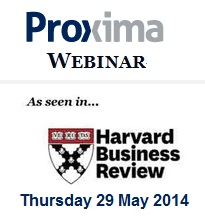I doubt that when French novelist Alphonse Karr coined the phase the more things change, the more they stay the same, he was thinking about procurement. Based upon a March 27th, 2014 Harvard Business Review article by Proxima CEO Matthew Eatough, Karr would not be unique in this regard. In fact if you accept the premise behind Eatough’s text, it seems that very few people – including those in our profession – consider procurement in any meaningful way.
As I read the Proxima CEOs list of why procurement “doesn’t register on the C-suite’s radar in a manner proportionate to its growing importance within the organization,” I was immediately reminded of a post I had written here on Procurement Insights shortly after the blog was launched in May 2007.
The post to which I am referring Procurement’s expanding role and the executive of the future, highlighted several critical points from a 2006 CPO Agenda roundtable discussion involving senior procurement personnel from organizations such as Nestle, Danone, British Airways and Merrill Lynch.
In reading that post, one might be excused for drawing the obvious parallels with the present day Eatough HBR article. Especially when you consider the earlier piece’s reference to the fact that the majority of C-suite executives believed that the best person to run a purchasing department is someone who doesn’t have a purchasing background.
Of course the parallels run even deeper when you read Eatough’s assertion that part of the bigger recognition problem is that there is an “unproductive fixation on cutting costs.” The irony here is that in talking about how decreased spending has little or nothing to do with increasing shareholder value Eatough, while on the mark, is simply confirming the findings from a May 4th, 2006 article How To Speak Like A CFO. Specifically that “finance executives in Corporate America simply don’t believe that purchasing departments are really bringing in the savings they claim.”
In fact, the following additional findings from a 2007 Aberdeen study are equally telling in terms of how CFOs and by proxy C-suite executives, view procurement:
- Less than 20% of CFOs consider the work of CPOs and their staffs as having a very positive impact on competitiveness.
- On average only 46% of CFOs feel that the procurement team has contributed to enterprise growth.
- Only 57% of CFOs feel that procurement contributes to enterprise profitability.
Perhaps this disconnect – at least in part – can be explained in the Robert Rudzki book Straight to the Bottom Line: An Executive’s Roadmap to World Class Supply Management, in which Rudzki and co-authors Douglas A. Smock, Michael Katzorke, Shelley Stewart Jr. concluded that procurement and finance do not speak the same language.
Rudzki then provides direction for procurement professionals in terms of the five critical “finance” areas upon which they should focus.
The redirection of focus Rudzki champions aligns perfectly with Eatough’s position as to what needs to be done to bridge both the communication and perceived value gap between procurement and senior management.
This last point is perhaps one of the reasons why I was more than pleased to accept the invitation to serve as a moderator for the upcoming Proxima Webinar on Shifting Corporate Management’s Attitudes Towards Procurement.
Focusing on what the Eatough article called the “four fundamental areas that need to be addressed and resolved by corporate management to bring procurement back in line with their business,” I view this 1 hour panel discussion as the ideal follow-up – albeit it long overdue – to the 2007 CPO Agenda Roundtable.
The only difference between 2007 and today is that the procurement profession has made some meaningful progress in elevating our organizational value, as reflected in Toshiba’s appointment of it’s long-time manager of procurement and manufacturing to the CEO position.
The only question is whether or not the Toshiba example is the exception to the rule or the start of a real and sustainable trend. This panel discussion will certainly go a long ways towards answering this, as well as other important questions.
NOTE: For updates and news on this upcoming webinar follow the #HBRPurchase hashtag on Twitter.
30

ivangruer
April 26, 2014
“Less than 20% of CFOs consider the work of CPOs and their staffs as having a very positive impact on competitiveness.” When you are focused everyday with numbers and figures soon or later you will forget the meaning behind. That is the risk I guess, not only for CFOs.